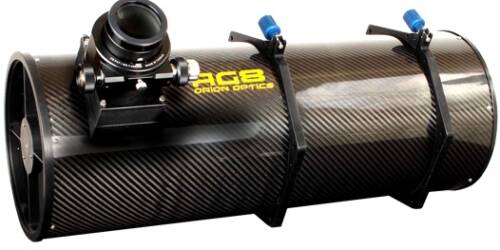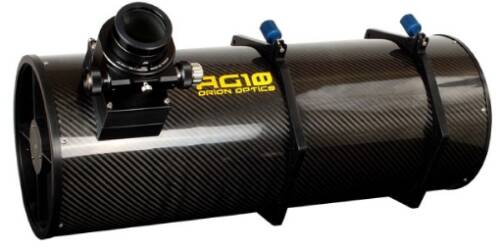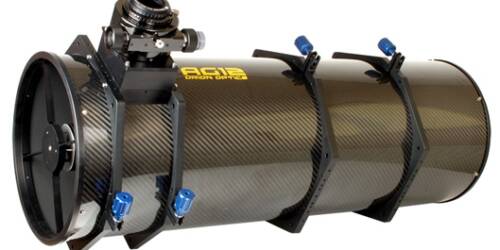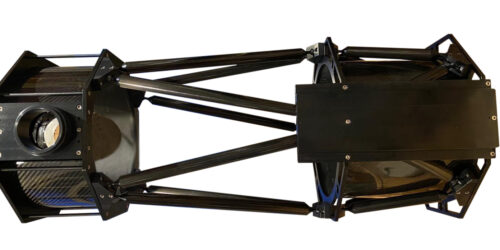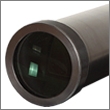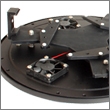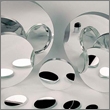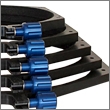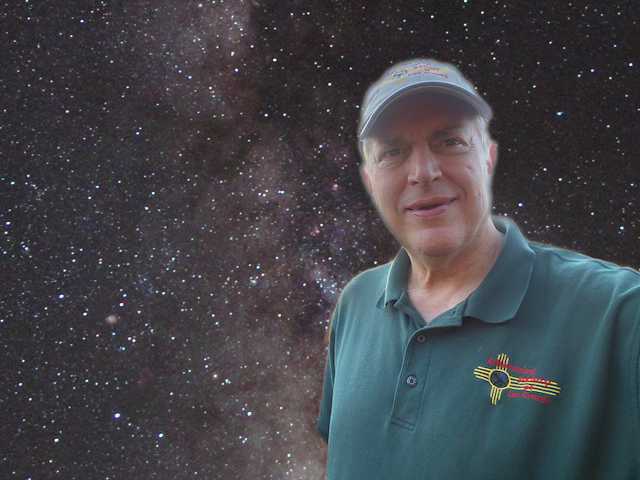Astrography Telecopes – AG
The AG Range of precision crafted telescopes
New from 2024 the AG14 and AG16 are truss designed and manufactured.
Carbon tube Astrograph Telescopes
with wide, flat fields utilising Carbon fibre sandwich tubes
AG telescopes are precision computer designed, hand built instruments. The flat fields are achieved by employing a state of the art, lens corrector system, designed especially to produce a wide, flat fields up to 60mm diameter. All our AG ‘scopes are supplied as standard with our ‘CERES’ custom designed and built 3″ focusers (76.2mm) to offer excellent stability over a wide range of camera loads.
For the ultimate focusing set up, we supply and fit customised adaptors to allow the fitting of the renowned FLI Atlas focuser in just a minute or so by customers which has an amazing carrying capacity. To aid stability even further, we also offer our ‘FocusForm’ equipment to reinforce every possible position where the smallest amount of flexure could take place, ensuring a rock steady platform for perfect, reliable, repeatable focusing of the image on your camera chip.
Air cooling fans are fitted as standard in the telescope’s main mirror cell to introduce cooling air to reach ambient temperature quickly and evenly assuring you of steady air within the tube and little or no possible currents to detract from a perfect image. From 2024 the AG14 and AG16 are truss designed and manufactured,
THE AG RANGE OF PRECISION TELESCOPES
SPACE AGE MATERIALS
CIRCULAR FIELD STOPS
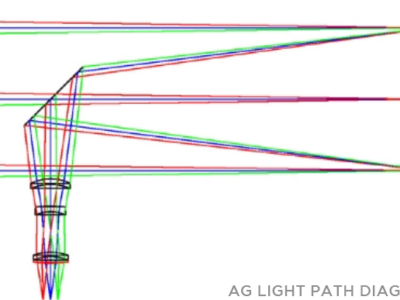
All our AG telescopes are extensively tested in our optical laboratories in our factory.
However, there can be some small yet irritating effects created on long exposures of subjects on virtually all telescopes which may have a bright star in the field. This effect, if not corrected, can detract from a perfect image of stars and give a little roughness to the edge of a star’s edge. It is caused by microscopic ground pits around the extreme edge of the chamfer of the primary mirror which can disturb ever so slightly the light and create this problem.
To counter act this small problem, all our AG and ODK primary mirrors have a perfectly formed circular field stop placed around the chamfer of the mirror to eliminate completely this artefact. This stop creates a razor sharp star image, completely free from any slight scattering of light caused by this effect to yield star images, second to none in sharpness and contrast. Correct engineering and testing are essential to create designs such as this.
We employ every design feature possible to get that little bit extra out of your telescope, we like to think on a par with the engineering success of F1 cars where nothing is spared for that little bit of extra power.
BEST PERFORMING MIRRORS
All our AG primary mirrors are made from Schott Borosilicate Low Expansion Suprax glass (virtually identical to Pyrex), as are all our primary mirrors on all ranges of telescopes. The mirrors are all produced to exacting standards to an F4 paraboloid configuration.
How exact are they?
Well, we don’t release one to our coating department unless it achieves a surface accuracy of 1/16 wave or better.
How do we know when we have achieved that very high degree of accuracy?
We use one of the worlds most exacting measuring devices, a Zygo Laser Interferometer.
Take a few minutes and visit the Zygo page and be amazed at just how good this machine is at measuring optics, it can measure optical distances which are smaller than 2,000, yes, 2,000 times smaller than the thickness of a human hair.
Without a Zygo or similarly accurate and reliable measuring instrument, it is impossible to give accurate measurements of an optics’ or telescope’s performance. Only the best manufacturers in the business of making telescopes use them because they are not suitable for mass produced telescopes, they are slow to use and need highly skilled technicians to operate them, it just does not lend itself to anything other than the highest quality, hand figured optics, definitely not mass produced optics to a tight budget.
hiluxThe elliptical secondary mirrors are also made and Zygo tested to the highest standard, again in most instances (the larger sizes) we use Suprax to give stability and accuracy. These, along with the primary mirrors are Hilux coated for the highest possible aluminium protected reflective surfaces available.
Our 3” (76.2mm) Wynne corrector is made from very special glass types and produces the best performance you can achieve from a corrector of this size. For full details of this corrector please visit this link to the appropriate Corrector web page for a feast of information.

